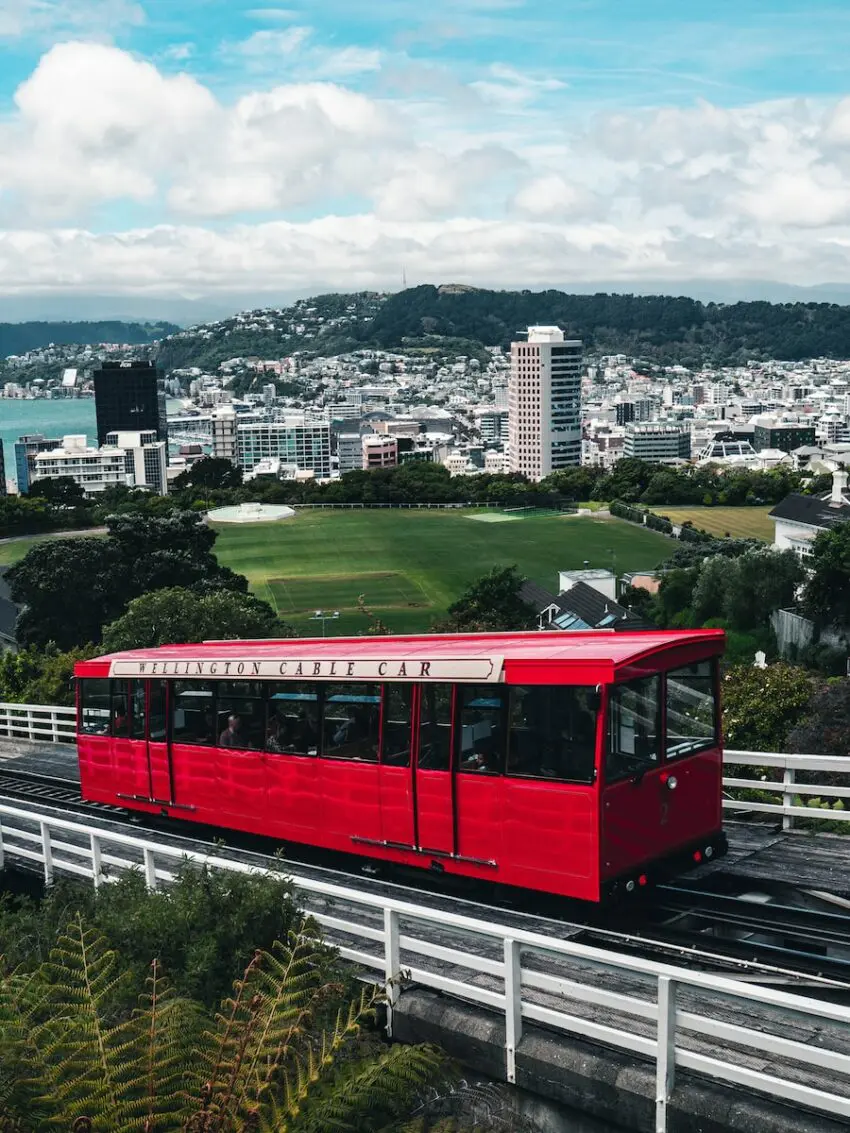Since 1902, the Wellington Cable Car has been a vital part of the city’s public transport infrastructure and an iconic tourist attraction. The cable car system links the city center with the nearby suburb of Kelburn, and offers spectacular views of the harbor and the city skyline. The history of the Wellington Cable Car is steeped in innovation and unique engineering, and is a reflection of the city’s long history of technological advancement and public infrastructure development.
Early Years
The Wellington Cable Car first opened in 1902, making it the world’s first public-transport system to open using a double-track cable car system. It was a revolutionary system at the time, and was made possible by the installation of a 440-volt electrical system. The cable car was designed by English engineer Leonard Rees and was built by the firm of E.W. Mills.
The system was relatively simple, consisting of two cars running on a continuous cable between two stations. The cars were powered by electricity, and passengers simply had to pull the “trip levers” at the stations to stop the cars and allow passengers to board or disembark. The cable cars ran between the Lambton Quay station in the city center and the Kelburn station up on the hill.
The Wellington Cable Car quickly became a popular form of public transport, and in its first decade of operation it carried over a million passengers. As the popularity of the cable car grew, several other lines were built, including the Kelburn-Karori line and the Thorndon line.
20th Century Developments
In its early years, the Wellington Cable Car was powered by several steam engines installed in the stations. However, in 1924, the cable car system was upgraded to use electric-powered motors, allowing for a smoother and more efficient ride. As the popularity of the cable car grew, the number of passengers increased and the capacity of the car was increased to sixteen passengers.
Over the course of the 20th century, the Wellington Cable Car underwent several upgrades, including changes to the track, new cars, and improved amenities in the stations. In the 1930s, the cable car was extended to the botanical gardens in the suburbs, and in the 1950s the line was extended further to a new terminus at the Kelburn Lookout.
Modern Age
In 1978, the Wellington Cable Car underwent a major overhaul and upgrade to meet the growing demand for public transport. The entire system was modernized and a new turntable was installed in the lower station. The existing cars were replaced with larger and more comfortable cars, and the interior of the stations were upgraded to provide increased safety and comfort for passengers.
Since then, the Wellington Cable Car has become an iconic part of the city’s public transport infrastructure, providing a convenient and scenic way of travelling between the city center and the suburbs. As well as being relied upon by commuters, the cable car is a popular tourist attraction, offering visitors a unique view of the city and the harbor.
Key Facts About the Wellington Cable Car
- Opened in 1902: The Wellington Cable Car was the world’s first public-transport system to open using a double-track cable car system.
- Powered by Electricity: In 1924, the Wellington Cable Car system was upgraded to use electric-powered motors, allowing for a smoother and more efficient ride.
- Iconic Attraction: The Wellington Cable Car has become an iconic part of the city’s public transport infrastructure, and is a popular tourist attraction.
Discovering Wellington’s Cable Car History
From its early days of innovation to its modern age of efficiency, the Wellington Cable Car remains an iconic feature of the city’s transport infrastructure. Whether you’re a local commuter or a tourist exploring the city, the cable car is a great way to explore the city’s past and the unique engineering that made it possible.
You can discover the history of the Wellington Cable Car with a visit to the Wellington City and Sea Museum, which houses a permanent exhibition about the history of the cable car system. Or, you can simply take a ride on the cable car itself and experience the unique views of the city and the harbor.
No matter how you choose to explore the history of the Wellington Cable Car, you’re sure to enjoy discovering the unique engineering and innovation that went into this iconic public transport system.

